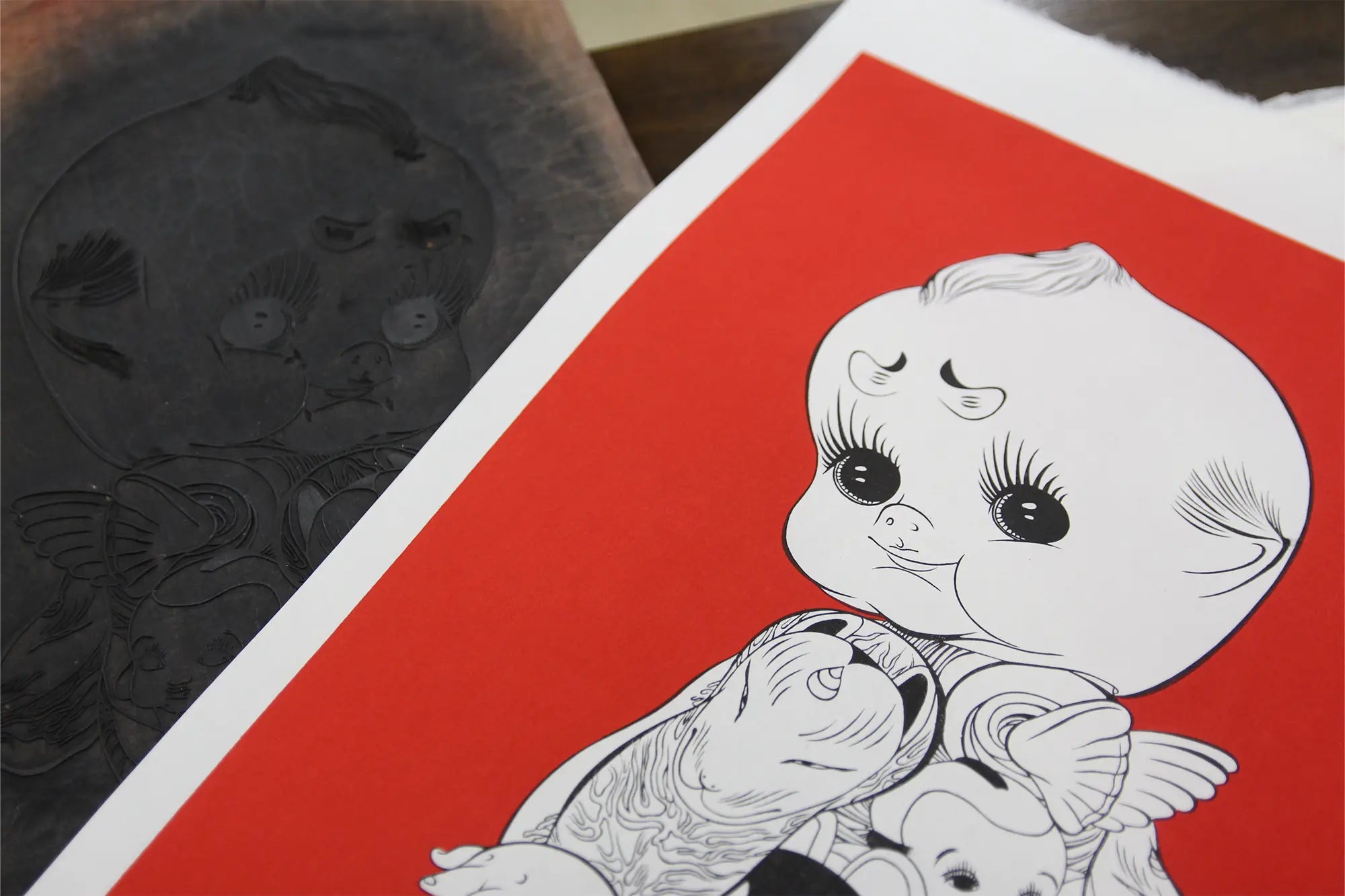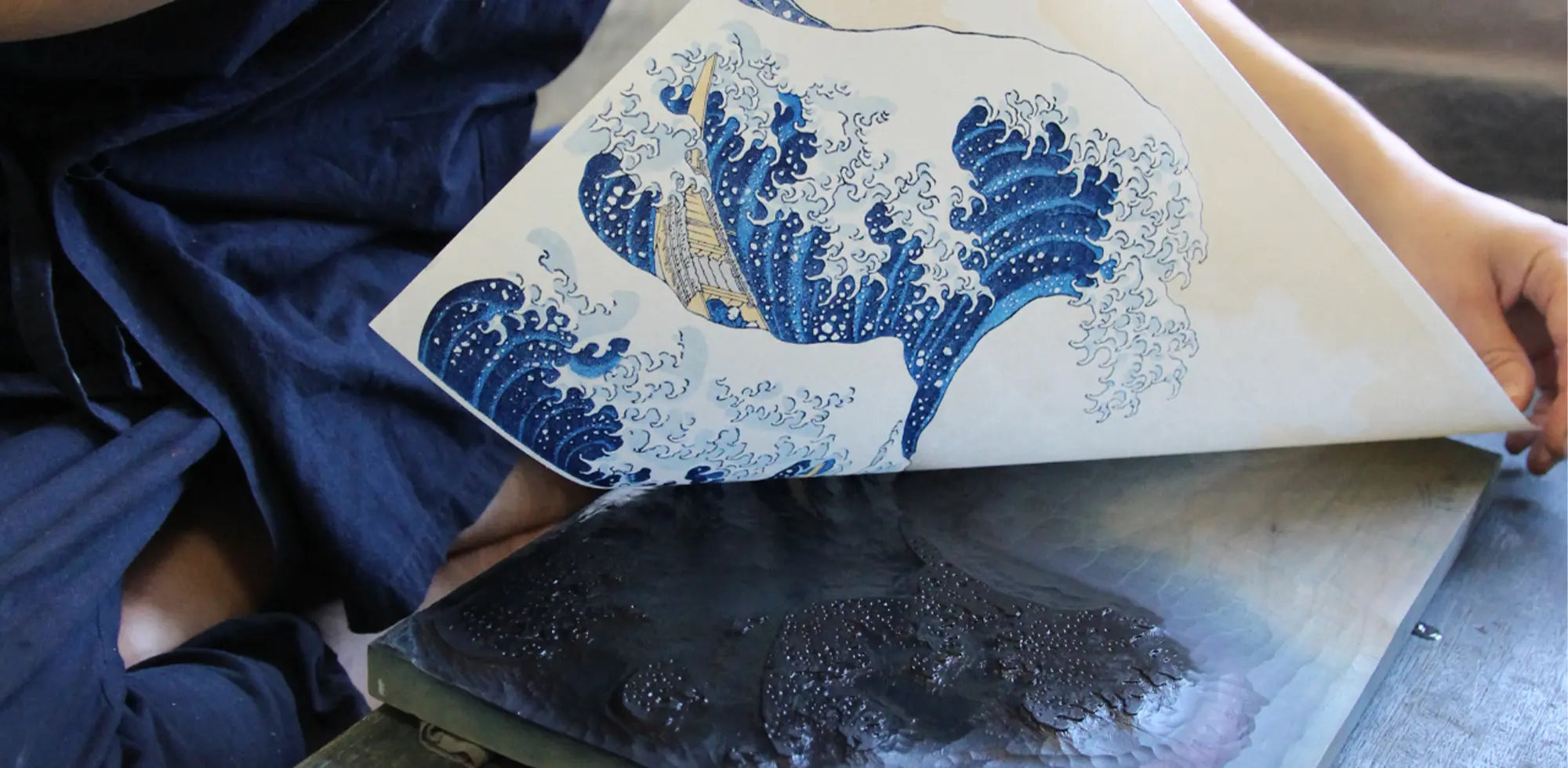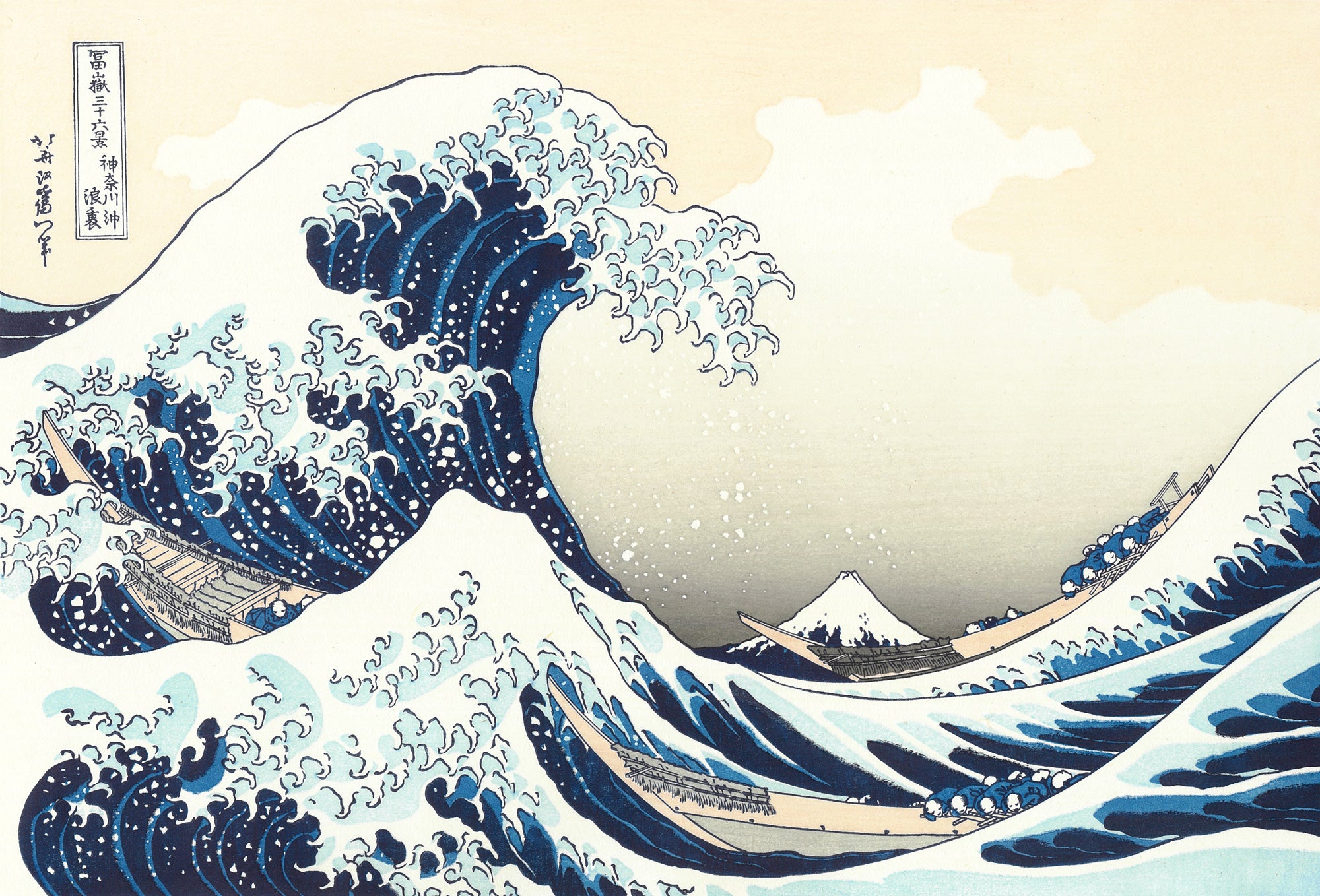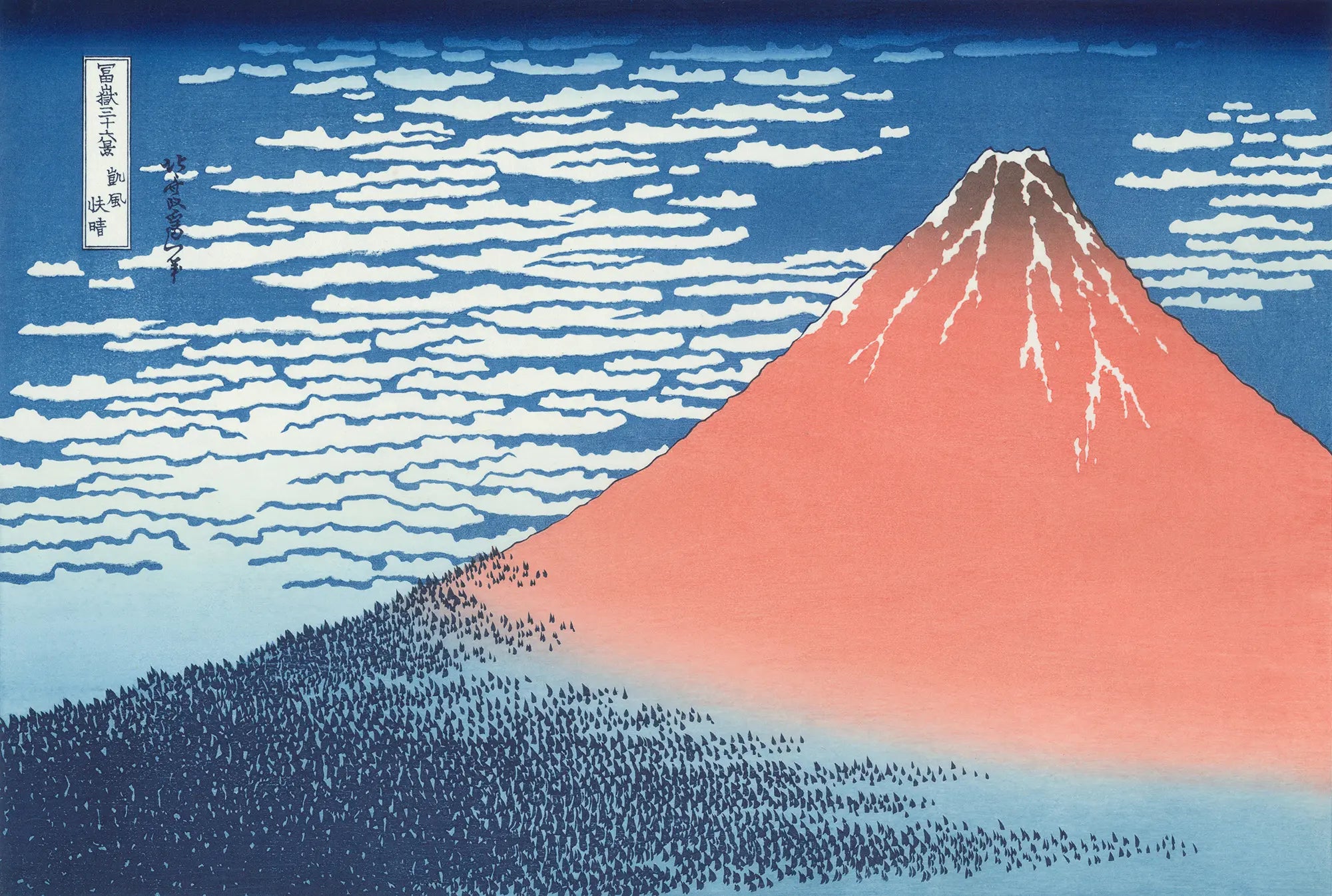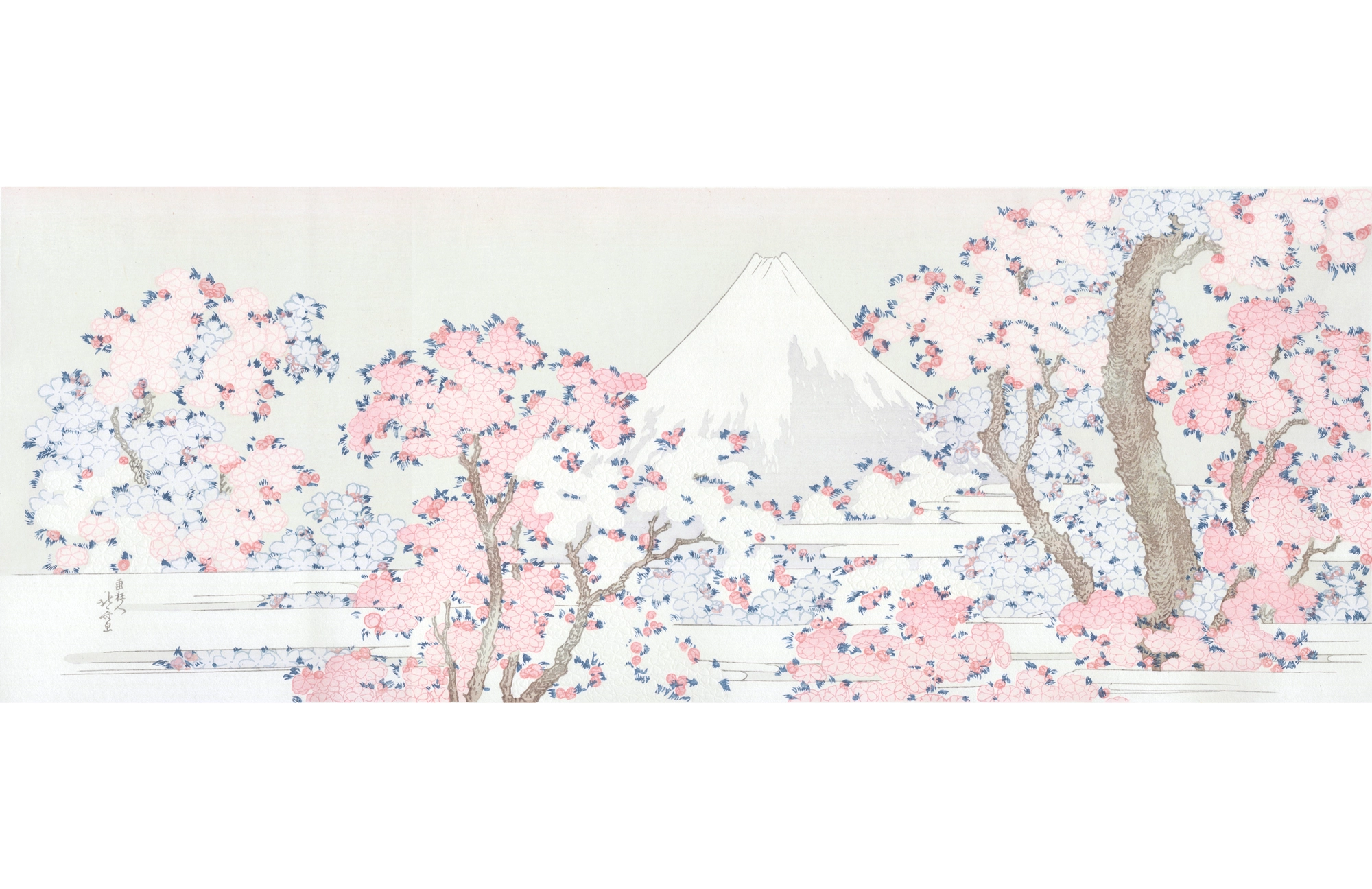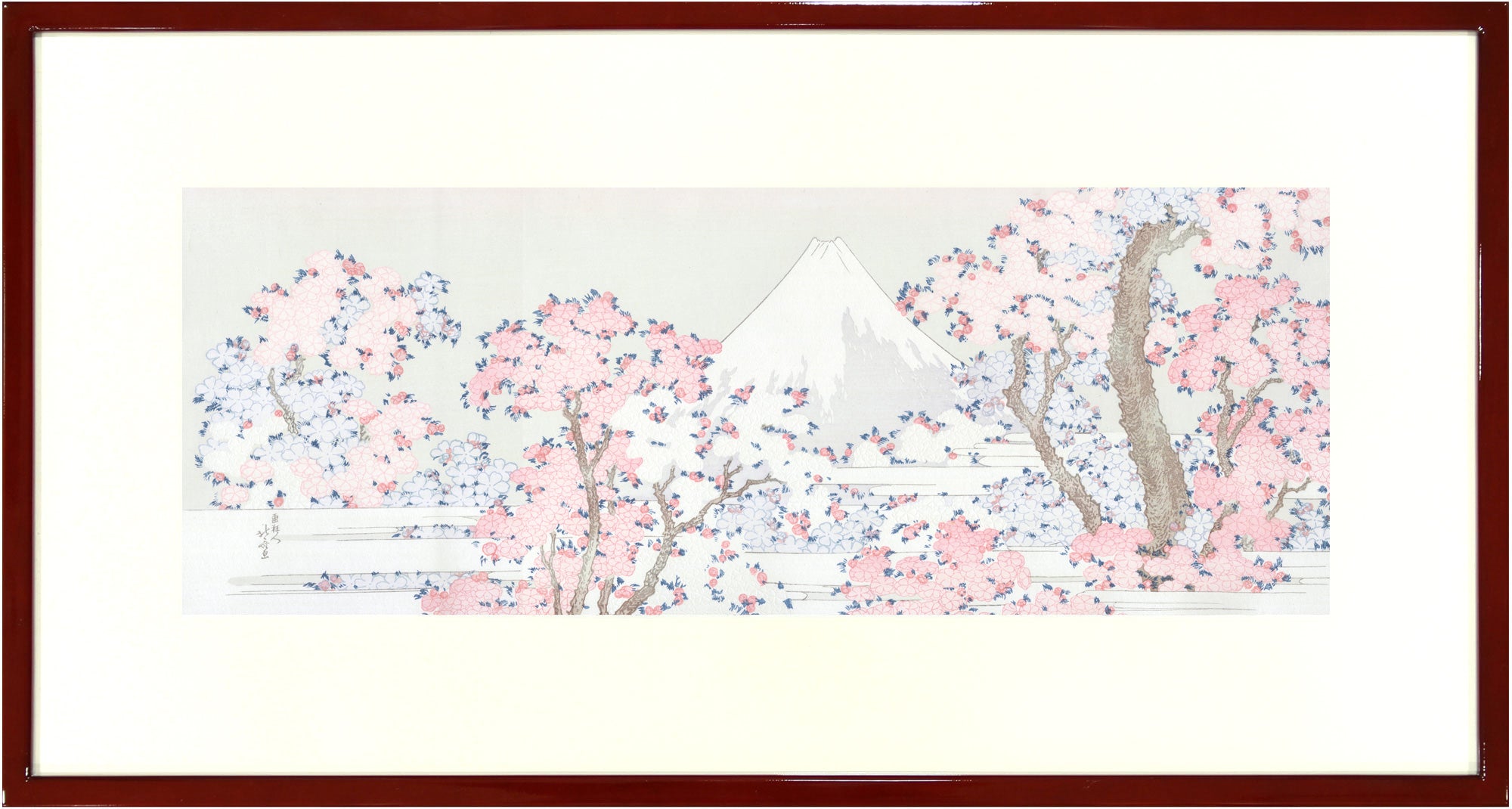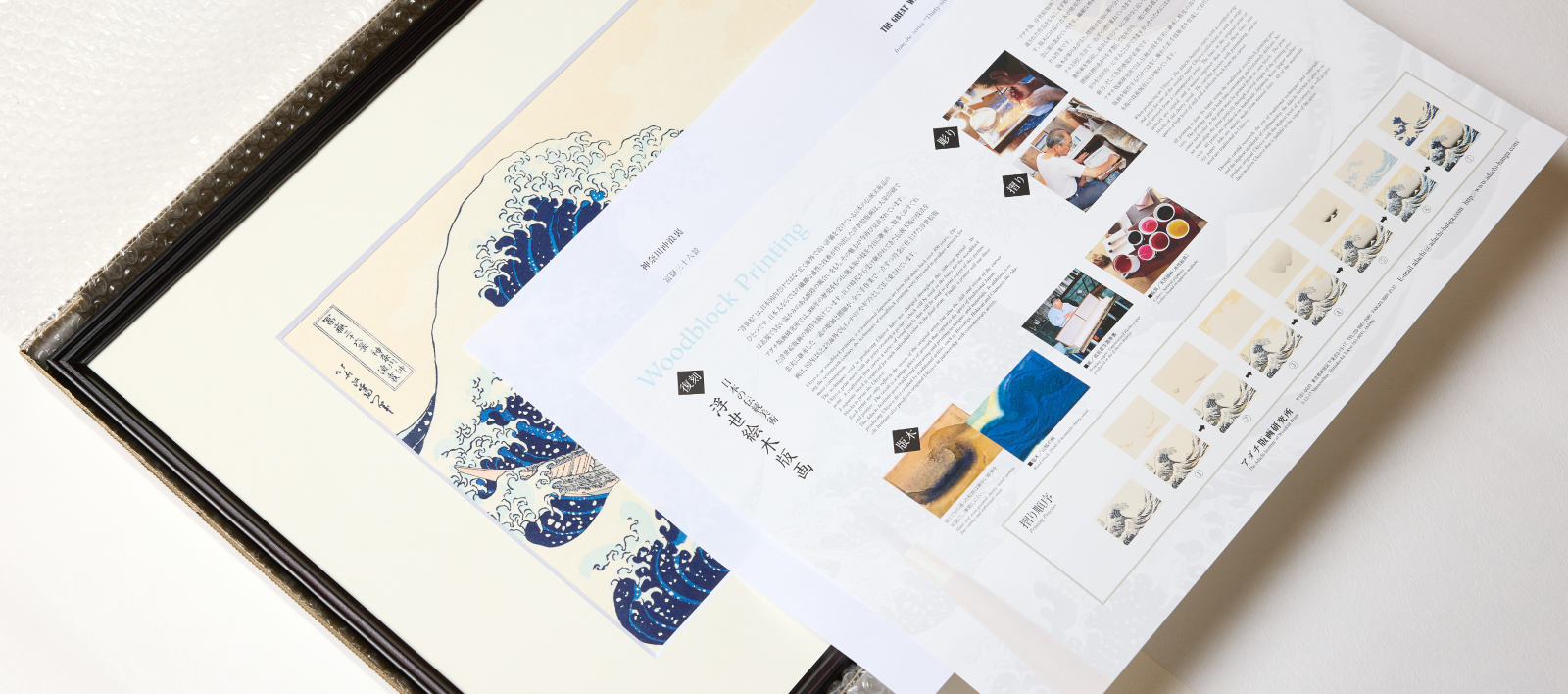
-Adachi's Ukiyo-e- A great gift for your special occasion
Gift
-Adachi's Ukiyo-e- A great gift for your special occasion
At Adachi Institute of Woodcut Prints, we offer reliable and convenient services for customers who are considering giving ukiyo-e reproductions as gifts.
Adachi's ukiyo-e reproductions are highly appreciated as gifts to celebrate auspicious occasions such as the construction of new buildings, store openings, childbirths, birthdays and weddings, or as souvenirs that convey a sense of Japanese culture and history.
We offer a variety of services to meet customer needs, such as the attachment of leaflets introducing ukiyo-e print production techniques, wrapping services, international shipping, and airport delivery.
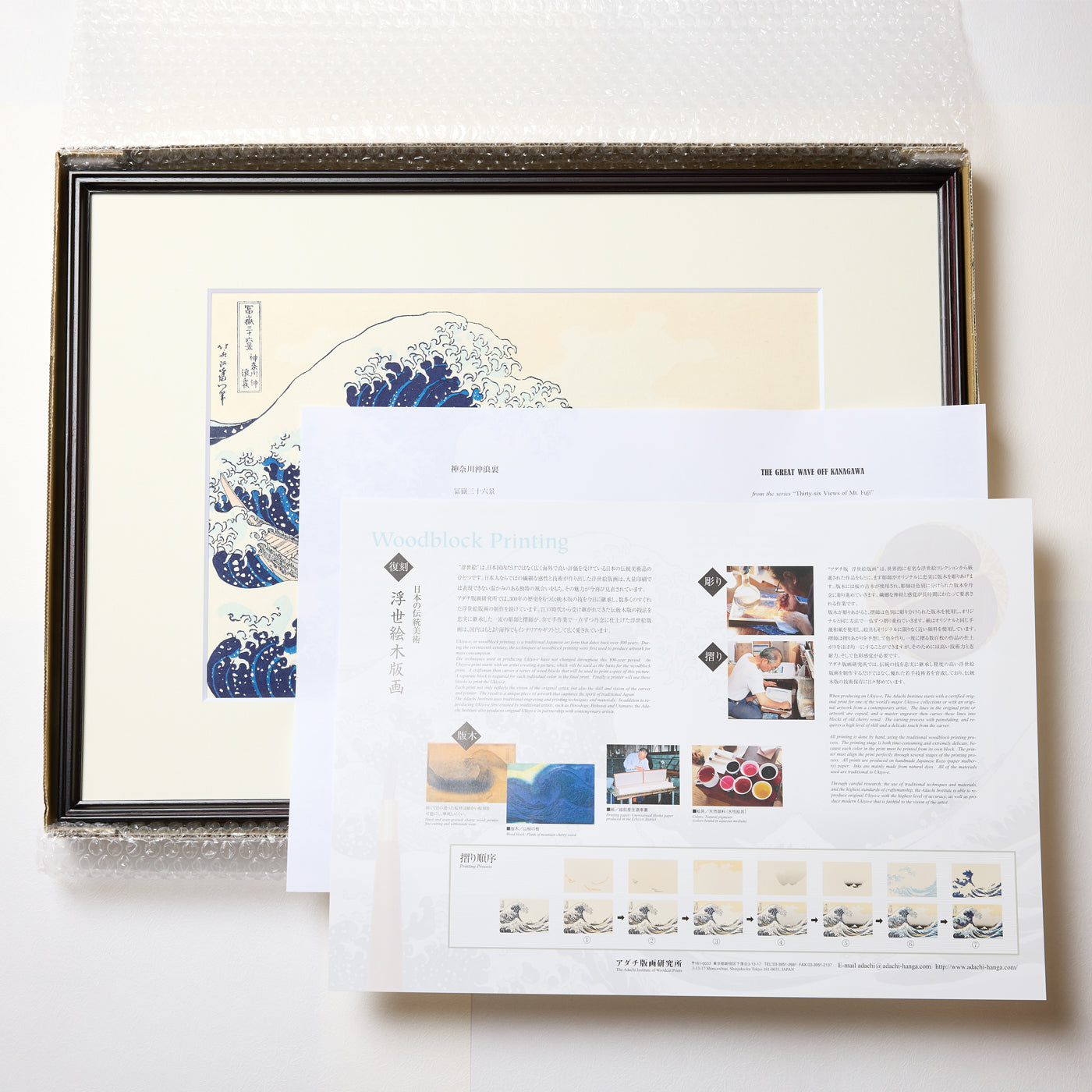
Explanation of Print in English and Japanese
Most of our ukiyo-e prints includes leaflets of the explanation of the print and the production process of ukiyo-e prints in Adachi studio.
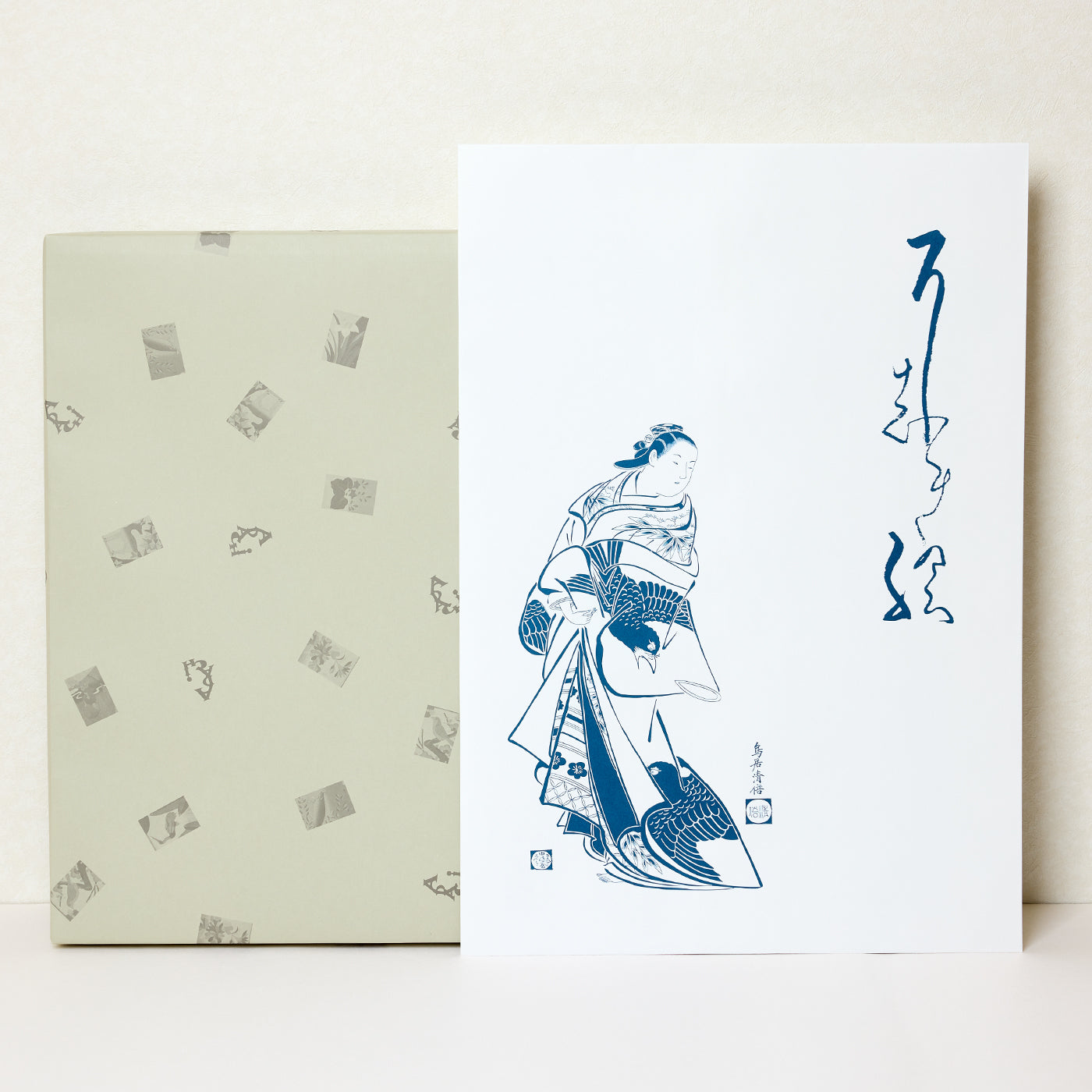
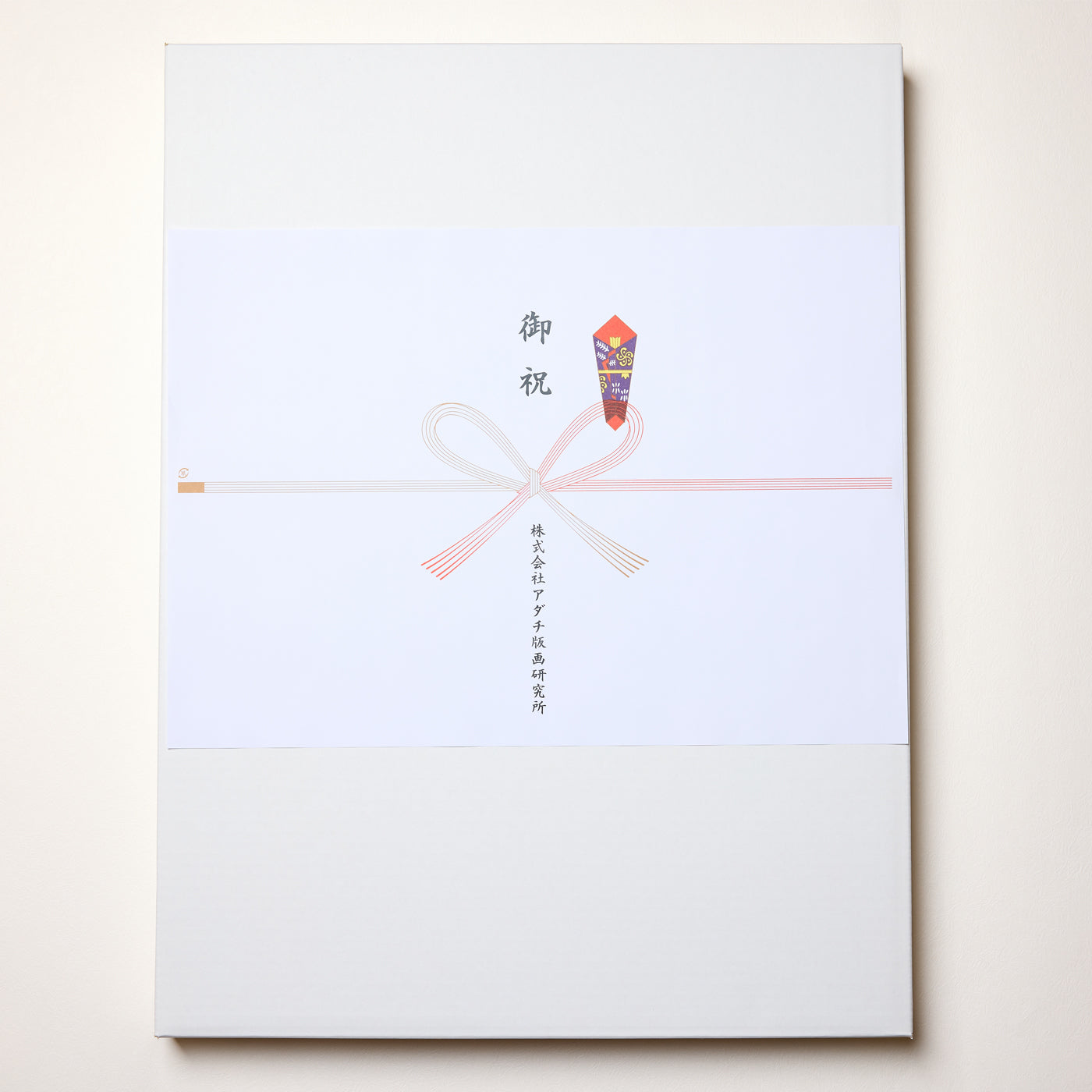
Adachi's Gift Wrapping
A unframed print is set in the Adachi original ukiyo-e envelop and a framed print is set in the box and wrapped with Adachi Original wrapping paper.
Reliable gift services
×Traditional Japanese gift ornament “noshi”
In Japan, there is a custom of attaching an ornament called “noshi” to important gifts. Noshi uses the color and shape of paper strings called “mizuhiki” and letters to convey a message to the recipient.

[Types of mizuhiki]
A. Red and white “chomusubi” (bowknot): Used for any auspicious event that may occur over and over again (childbirths, awards, etc.).
B. Red and white “musubikiri”: A knot that is difficult to untie, used for auspicious events that should only occur once (weddings, recovery from illness, etc.).
C. Black and white “musubikiri”: Used for funerals and condolences.

[Letters written above mizuhiki]
The purpose of the gift is written (such as congratulatory and thank-you gifts). The color and shape of the mizuhiki will generally convey the purpose of the gift, so there may be no need to write anything above it.
[Letters written below mizuhiki]
The gift-giver's name is written. If the gift is from multiple people, write in joint names, multiple names may be written. The name of a corporation or organization may be written as well.
 |
 |
| ex.1) Baby's first annual festival [Grandparents → Grandchildren] |
ex.2) Retirement gift for a colleague [Your department (All members of Sales Section 2)→ Retired person] |
 |
 |
| ex.3) Thanking your boss for his/her help [Your name (Adachi)→ Your boss] |
ex.4) Celebration of the 60th birthday [Childrens (Ichiro & Kazuko) → Father or Mother] |
 |
 |
| ex.5) Marriage Celebrations [Your name (Tanaka) → Bride and Groom] |
ex.6) Casual gift [Your name (Nakayama) → ?? ] |
[How to apply noshi]
・Inside noshi (“uchi-noshi”): The noshi is applied on the item, and then covered with wrapping paper. More people in Japan prefer uchi-noshi. At our company, we use uchi-noshi as a basic rule.
・Outside noshi (“soto-noshi”): The item is covered with wrapping paper, and then the noshi is applied over it. This is preferred when presenting at ceremonies or thank-you parties.

Shipping overseas (outside Japan)
We accept overseas shipping of products and have a track record of shipping to many countries. When shipping overseas, we take extra care to protect the products using cushioning materials and secure packaging.
For customers who wish to take their own items outside of Japan, we can also deliver them to the airport.
Gift service (International Shipping)
×About International Shipping (Outside of Japan)
We have a lot of experience with international shipping!
We have delivered our products to many countries and regions around the world.
▪️ Areas where we have delivered to date (as of April 2024)

Estimated shipping costs and delivery times by area
| Area | Delivery time | 1-5 Unframed Prints | One Framed Print |
|---|---|---|---|
| A | 3-6Days | ¥3,600 | ¥5,300 |
| B | 4-6 Days | ¥4,000 | ¥6,000 |
| C | 4-7Days | ¥4,400 | ¥7,000 |
| D | 4-7Days | ¥6,500 | ¥8,000 |
| E | 4-7Days | ¥7,500 | ¥13,500 |
Charge the custom to a purchaser
* FedEx offers the service to charge the custom to a purchaser (not a consignee) after the fee is fixed for the destination country. This service is useful when you would like to ship the item as a gift and do not want the consignee to pay for the custom. Please request us if you would like to use this service.
Deliver to the airport
For customers who wish to take their own items outside of Japan, we can also deliver them to the airport. You can receive your products smoothly before your flight.
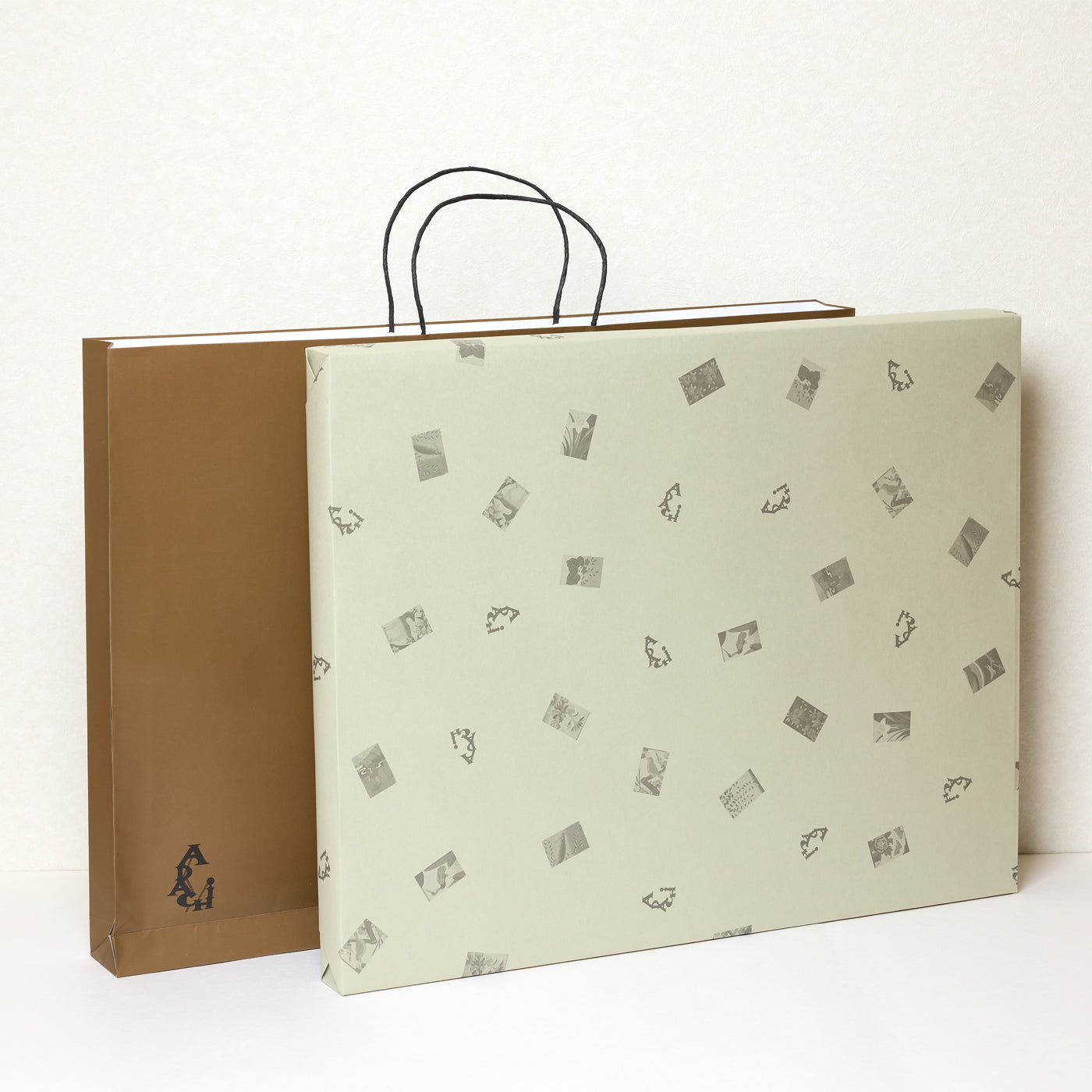
Original carrying bags
We offer carrying bags (originally designed by Adachi) that are convenient to carry. Framed ukiyo-e will fit perfectly in the bags. If you wish to use a carrying bag, please select it on the order screen.
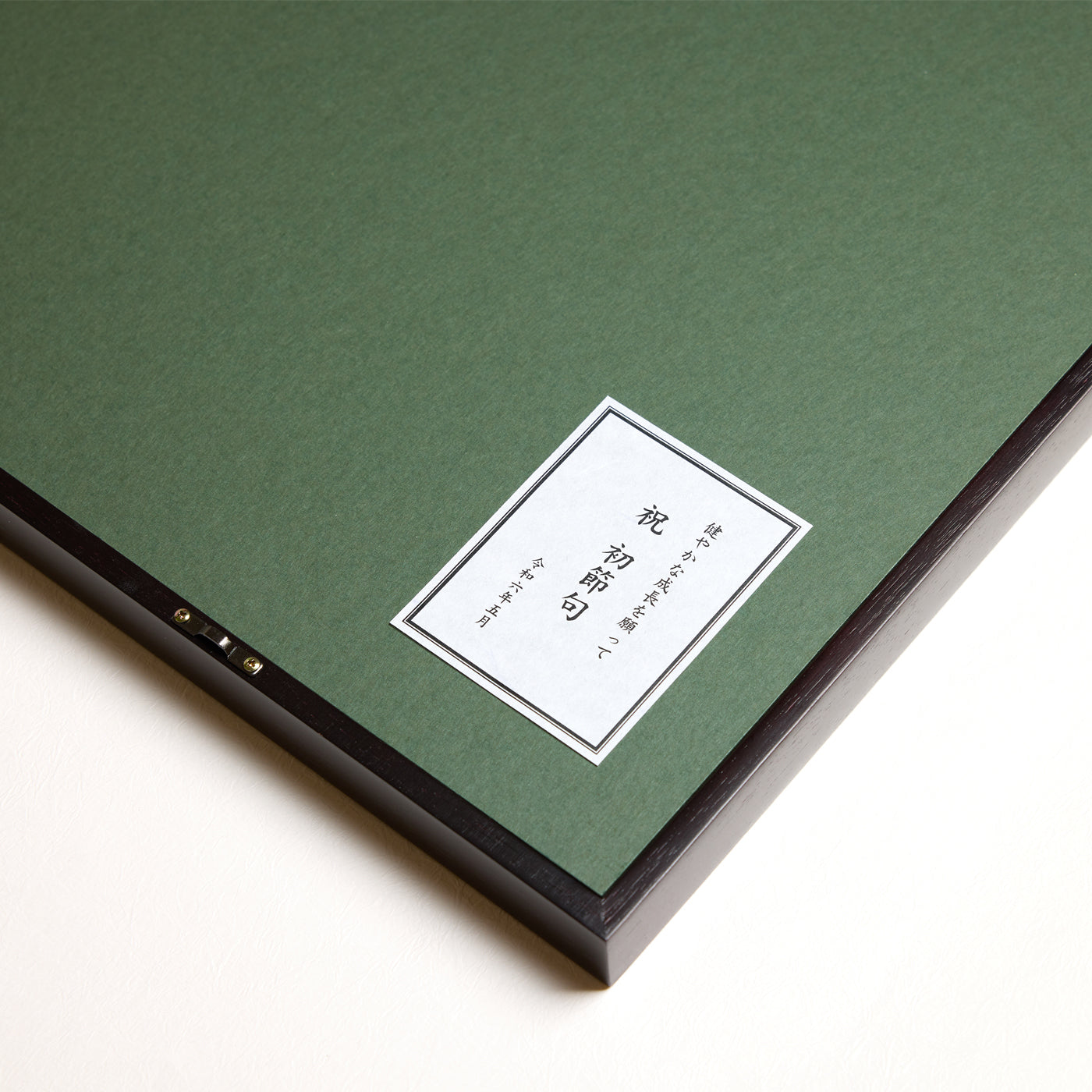
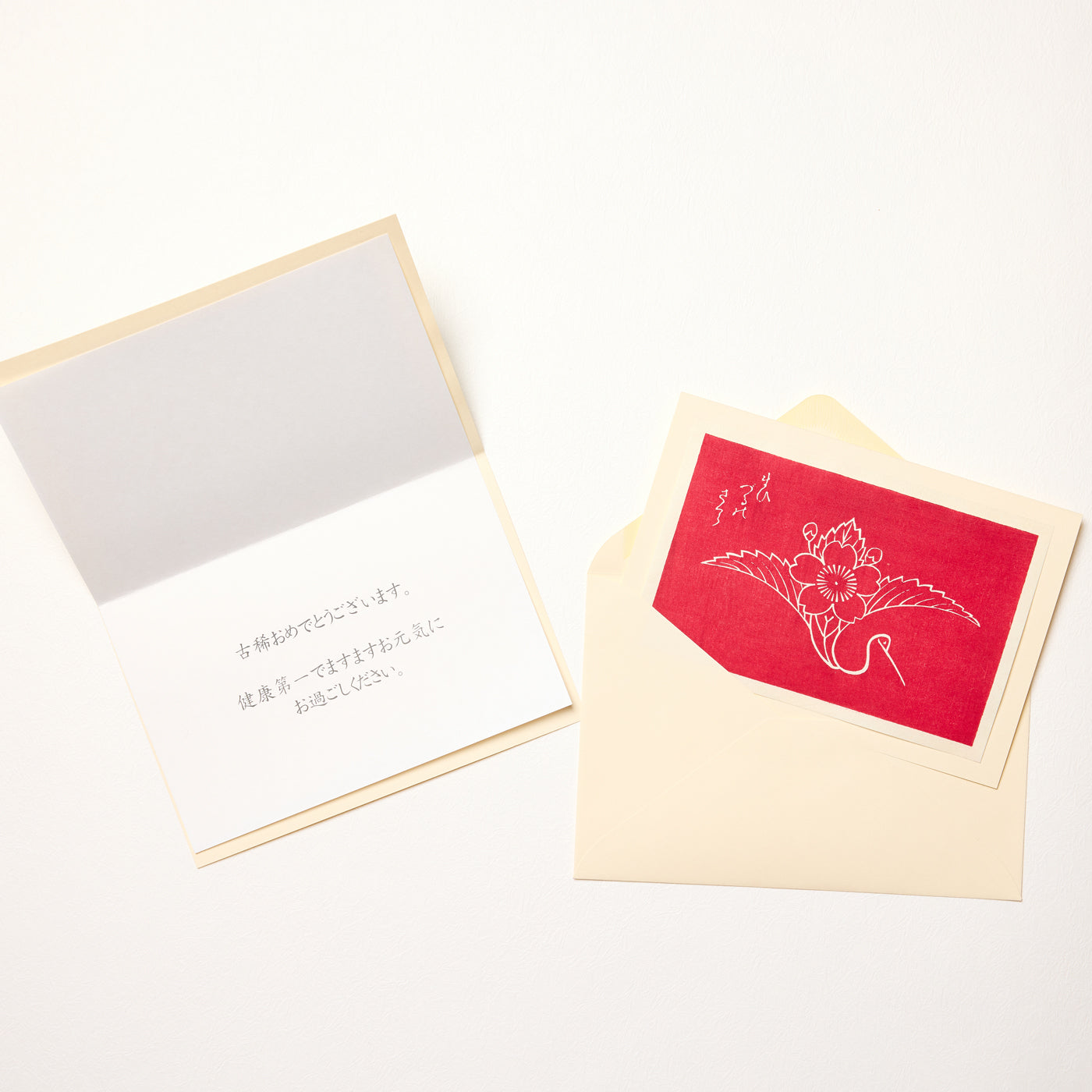
Gift Messages
You could request a message card to attach on the back of the frame or include in a package.
Gift Option (Message on the frame & Message Card)
×Message on the frame <sample>
We also offer a service where you can print and paste your desired text on the back of the frame, such as words of congratulations, a message, your child's name, or an anniversary.
[How to use]
1. Check "Use gift"
2. Select "Yes" in column <Colophon>.
3. Select the font
4. Enter your desired text in the notes section
【1】 horizontal / 3lines-Mincho font

【2】 horizontal / 3lines-Block font
【3】 horizontal / 3lines-Gothic font
【4】 vertical / 3lines-Block font
【5】 horizontal / 3lines-Times
【6】 horizontal / 3lines-Arial
【7】 horizontal / 3lines-Antiqua
Message Card
The designs were chosen from Hokusai's pattern book called "Hokusai Moyogahu". The patterns in the book were all designed by Hokusai and originally for the kimono. All of them are very sophisticated and mostly represent each season. Adachi carefully picked a couple of patterns for each season and designed them onto greeting cards.
Please leave your message in the note column if you wish to add your original message.


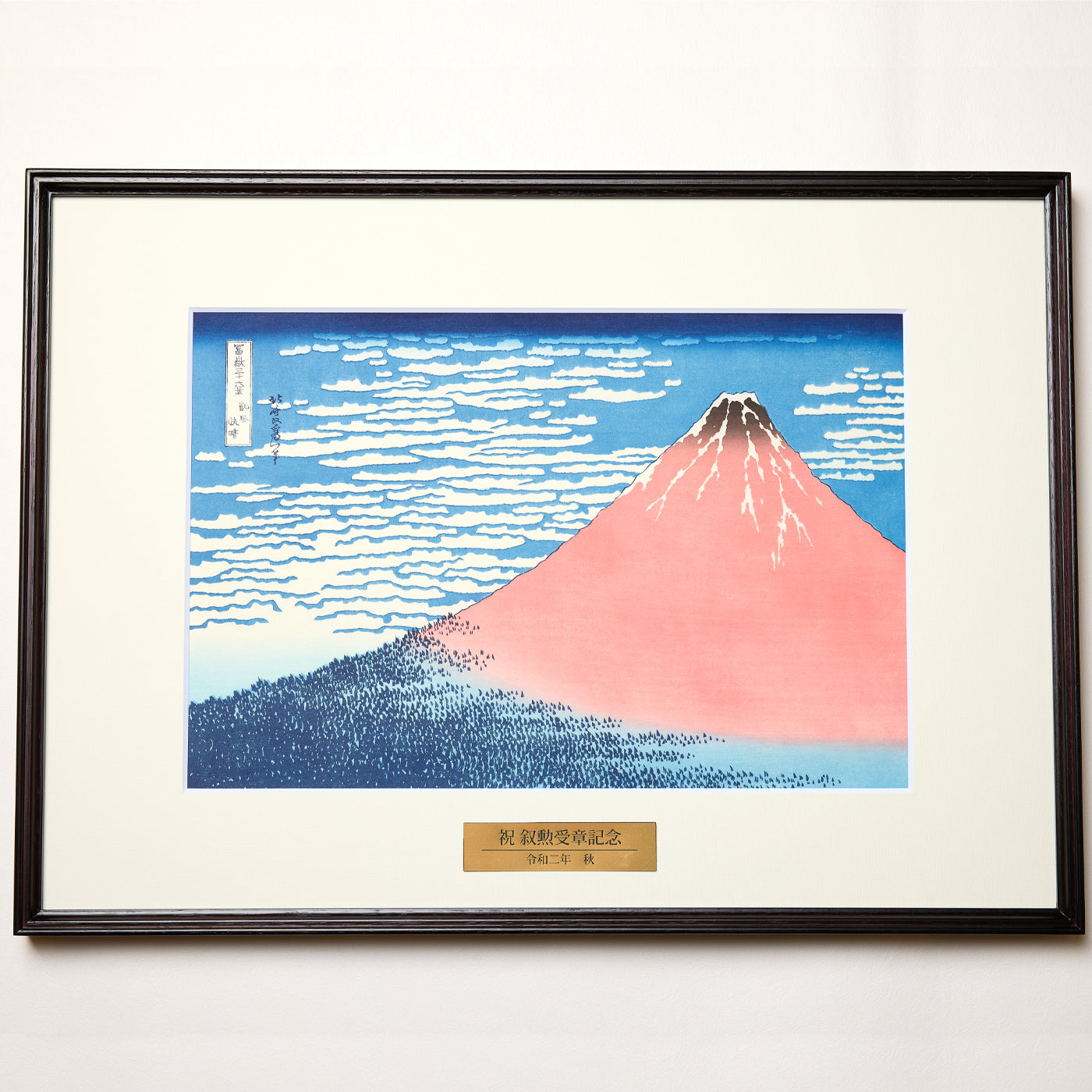
Luxurious message plates [optional fee-based service]
Your message will be printed on a golden plate (made of acrylic). The plate will be pasted on the front side of the frame below the ukiyo-e. This is recommended for gifts to companies.
Popular Gift
2 colors available

